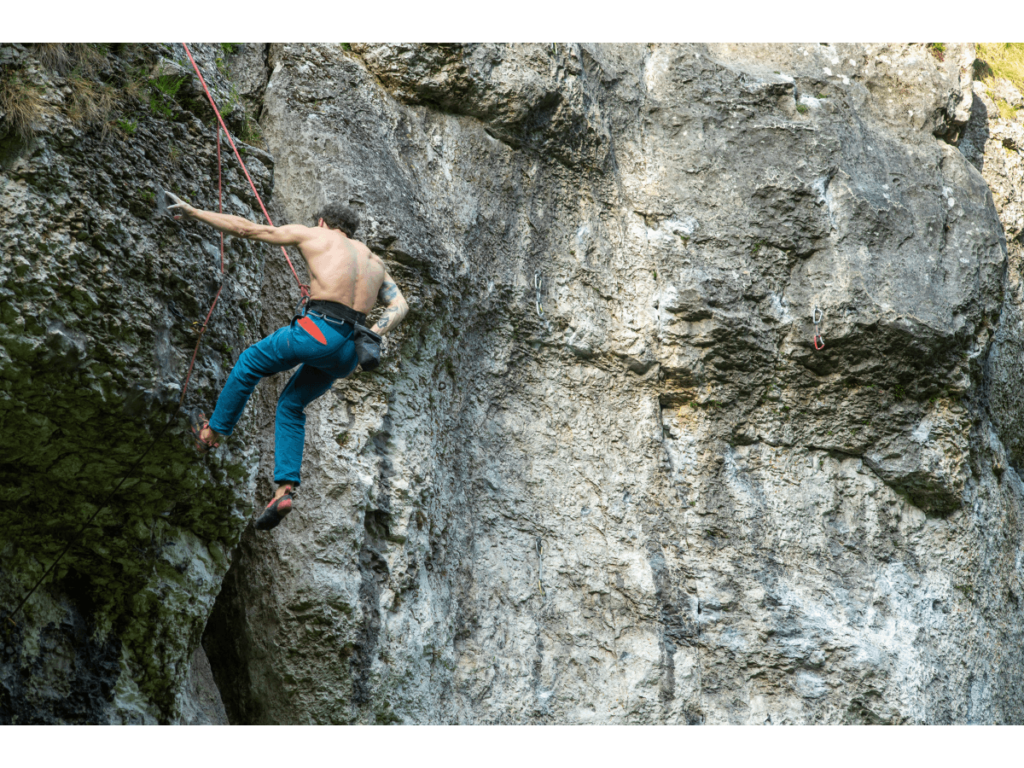Building your first trad rack is exciting! But it can be daunting; we get it. How many cams do you need, and what sizes should you get? Should you buy Black Diamond or Metolius gear? Do you need anchor building materials?
Don’t worry; we’ll give you the basics for building your first trad rack to help you start placing gear in no time.

Essential Gear for Trad Climbing
Auxiliary Rack
This gear will be your anchor building material, belay device, rappelling gear, nut tool, and any extra equipment you may want on a trad climb.
Anchor Building Materials:
- 120cm Slings x 2 – Can extend gear longer than a typical sling or anchor.
- 240cm Sling x 1
- Cordelette x 1
- Large Locking Carabiners x4
- Small Wire Gate Carabiners x 2-4
- Nut Tool
- Belay Device
Attach your large lockers to gear that will be used for your anchor material so they’re ready to clip into once your anchor is built. You can also use one of these 120cm slings to extend your rappel while descending. The nut tool is a handy piece of equipment to help you retrieve stuck gear.
How you orient these on your harness is up to you; typically, putting your anchor building material in the back and out of the way of your pro is the most common.
Alpine Draws
60cm Sling – Pick up 6-10 of these
Wiregate Carabiners – You’ll need 2 per sling
An alpine draw is a quickdraw made from two smaller carabiners attached to a 60cm sling. Wear your alpine draws doubled up so you can extend them to their full length to minimize rope drag.
A standard rack will accompany anywhere from 6-10 alpine draws. Taking the latter with you will give you peace of mind that you can protect as much as you can, but when you progress in your trad climbing, you may want to use fewer alpine draws to save some weight.
Nuts, Stoppers, Wires
Set of Stoppers #1 – #13
These have multiple names, but a stopper is simply a chunk of metal attached to a wire used to wedge into cracks. When placing these, try to orient them so they have as much contact with the wall as possible.
Cams
Cams, or spring-loaded camming devices, work by squeezing the device so the gear contracts to fit into a crack and letting go when it makes the appropriate amount of contact with the rock.
A few companies make cams, but Black Diamond and Wild Country are the most common. The recommendation to buy BD or Wild Country isn’t from a difference in quality but rather a helpful suggestion, so you don’t need to convert cam sizes when reading beta.
Since these are the most popular brands, most beta is given in BD or Wild Country sizes. If you have a Metolius set of gear, you’ll still be able to understand the beta, but you’ll need to convert the sizes.
When you start, you’ll want doubles in some sizes and singles in others. You’ll want singles in sizes .1, .2, and 3. Doubles you’ll want in sizes .3, .4, .5, .75, 1 and 2.
Tricams
Next, we have a piece of gear that can be used as a stopper or a cam. The Tricam is excellent for your arsenal when you want versatility with what you can place. You won’t need many of these; many people don’t include them on a standard rack. If you decide to get a few, go with the pink (.5”) through purple (2”) Tricams. These sizes appear the most often on trad racks because they are light, easiest to clean, and the most versatile of the complete set.
Tips
- A beginner trad climber should first get comfortable placing gear and building anchors. You don’t need to climb to do this. Find a place on the ground where you can set different pieces of gear and practice getting comfortable with your sizes.
- A cam will be more secure when it has more surface contact with the rock. Get comfortable placing your bigger pieces on climbs before you purchase the tiny sizes (not mentioned).
- Cams do not come with carabiners. When you order a cam, you receive the cam attached to a sling. You’ll need to buy a set of carabiners for each cam you purchase.

